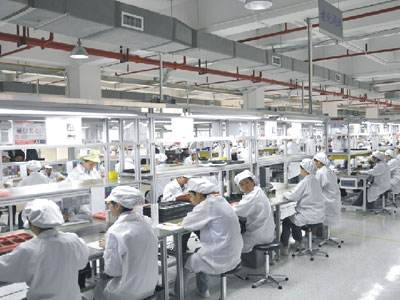How to improve the efficiency of line change in SMT industry
In the production process, line change refers to the production of a certain product on the same machine or the same production line, which is converted to the production of another product. In other words, changing the line means the time from the end of the production of the previous product to the beginning of the production of the next product.

How to improve the efficiency of line change in SMT industry
In the concept of lean manufacturing, the ability to change lines quickly is critical, because it determines whether a production line can flexibly and quickly meet the production requirements of multiple varieties. In addition, quick line changes can also avoid hoarding products and avoid increasing production costs, which ultimately leads to waste.
The line change time can be as short as a few minutes to as long as a few hours, and must be performed several times a day (depending on production needs). In general, the process of changing the line can be divided into three parts, disassembly, installation and trial production.
Disassembly: Refers to the complete removal of the previous product, required materials and components from the production line. The scope of adjustments involved can range from simple adjustments to major adjustments to complete disassembly of the entire production line.
Setting: refers to the entire process of adjusting equipment, including adjusting the operation of production equipment to match the production of the next product, or replacing the "components" that cannot be matched to better comply with the manufacture of new products. Generally speaking, the settings need to be adjusted and replaced at the same time.
Trial production: Refers to how much time it takes to review the entire production test process before officially starting the production of the next product. The so-called official start of production means that once it is put into production, it can reach a 100% through rate.
Line change reduces production efficiency
It can be seen that the line change is a time-consuming process, which is the main reason for the low efficiency and loss of profits of the SMT production line. If you want to calculate the cost of changing lines, you must first determine the profit target of each production line, and then calculate the cost from this extension.
Profit target of each SMT production line
Profit target in minutes
The above two charts split the profit target of each production line by time, from which two cases can be found:
It is impossible to make up for the wasted time
The time saved can increase profitability
You may ask, in the end, how can you save time on the line change, thereby improving profitability?
Calculate your line change time
First, let’s think about this question: how should you calculate the line change time? Which process should you start from and which process should you end?
If calculated by a single machine, the line change time is from the end of the last circuit board of the previous batch of products to the first circuit board of the next batch of products into the machine. If the calculation is based on a production line, the line change is from the last circuit board of the previous batch of products from the last machine offline, until the first circuit board of the next batch of products enters the first machine of the production line.
When calculating the line change time, not only the downtime, but also the time to complete the production of the first product, that is, the trial production.
In fact, there are different ways to calculate the line change time. However, the line change is only one of the factors that affects efficient production. To fully understand how to achieve efficient production, we must first understand the overall equipment efficiency (OEE), which will consider different factors, including downtime (production time), performance and equipment yield.

 咨询热线
咨询热线